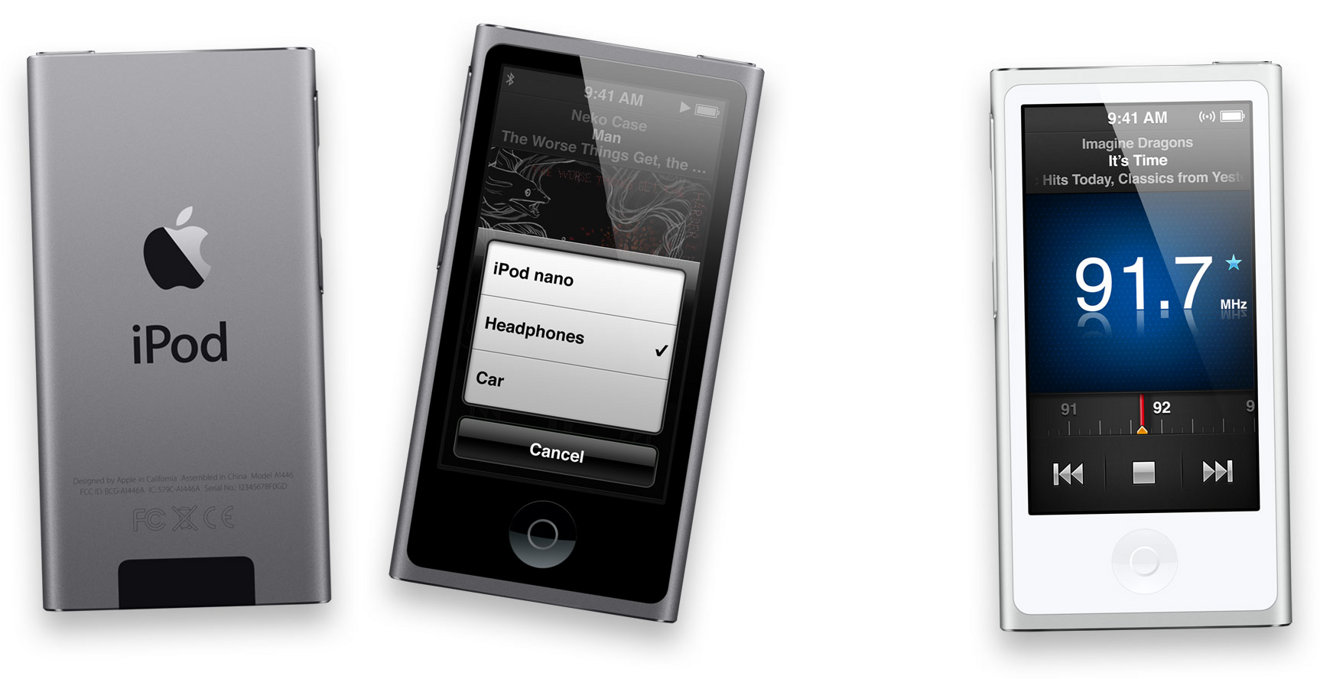Millions of consumers have switched off their radios in favor of music and commentary streamed over the internet, a trend that many in the terrestrial broadcast industry allege has been bolstered by device makers and wireless carriers who have conspired to disable built-in radio receivers in a bid to sell more expensive data packages.
Most smartphones — Â and indeed other connected devices, like tablets — Â ship with one of a handful of universal wireless communications chips inside, usually made by companies like Broadcom or Murata. They combine multi-band Wi-Fi and Bluetooth radios in a single package, reducing size and increasing efficiency.
In many cases, these chips also pack a third over-the-air option: an FM tuner.
While many low-end devices take advantage of this to tick yet another feature checkbox, flagship smartphones rarely enable it. Apple's iPhone has never shipped with the ability to natively receive FM broadcasts despite having a built-in tuner, and Samsung largely dropped it from the Galaxy lineup after the Galaxy S3. HTC's One M9 does come with the feature, as do some Windows Phone models.
This has led terrestrial broadcasters to band together in an attempt to convince carriers and manufacturers to enable the dormant chips.
According to Free Radio On My Phone, a group that includes NPR and the National Association of Broadcasters, "all listeners would have easy access to radio for the entertainment they love and information they need, but wireless carriers are dragging their feet and won't activate the FM chips that are in every smartphone."
Broadcasters argue that consumers would benefit by having the option to listen to music without using up their data allowance, or being able to receive emergency broadcasts over the air.
It's true that some manufacturers have disabled the FM tuners only for specific carriers, though it's unclear which side of the fence made that call. What's not true, though, is that carriers could simply enable the feature with a simple software update.
In phones where FM reception was not included in the design — Â like Apple's iPhone lineup — Â the tuner is often physically disconnected, and there's no FM antenna to be found. Most phones that do include FM capabilities use the headphone cords as antennas, which would require even more hardware changes.
Even if broadcasters do win out and convince manufacturers to begin making FM reception a priority, it may be too little too late as FM radio has begun to lose ground to digital audio broadcasting around the world.
Last Friday, just before the FM lobby's latest push in America, Norwegian regulators announced that in January 2017 the country would be the first in the world to turn off its FM stations in favor of DAB.
 Sam Oliver
Sam Oliver

-m.jpg)






 Marko Zivkovic
Marko Zivkovic
 Mike Wuerthele
Mike Wuerthele
 Christine McKee
Christine McKee
 Amber Neely
Amber Neely
 Wesley Hilliard
Wesley Hilliard

 William Gallagher
William Gallagher










108 Comments
Will CarPlay be able to do this to my vehicle's radio?
The same folks who are losing billions per year because their industry had evolved and they have not. And they actually think it's someone else's fault. The Schadenfreud is strong in this one.
I strongly agree that the FM tuners (and AM as well) should be activated. I listen to old-school radio every single day and would very much like to be able to listen via my phone without having to stream.
And the Norwegians aren't really an ideal model for the argument against. After all, they still eat dried fish.
I haven't listened to radio for at least ten years. I do get streaming news from an all news station but that is all. Free the spectrum for digital NOW!
And on the other side of the pond, they're pushing for DAB to be included in smartphones:
http://www.telegraph.co.uk/finance/newsbysector/mediatechnologyandtelecoms/digital-media/11159430/BBC-aims-to-boost-flagging-DAB-sales-with-smartphone-push.html